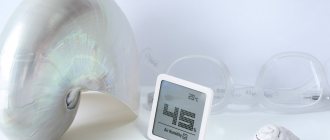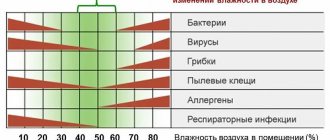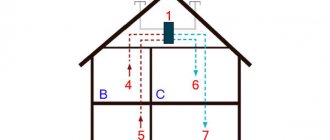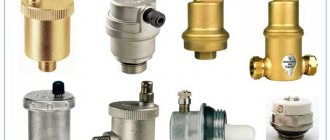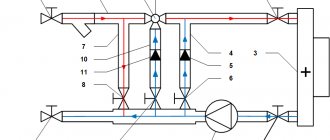Home / Encyclopedia / Standard air humidity in the office for comfortable work of employees Almost throughout the entire territory of Russia there is a winter heating period. For most of the population, its duration exceeds six months. Regardless of the heat sources (central heating with heating devices, convectors, electric infrared heaters, heated floors, wood stoves, etc.), the relative air humidity in offices decreases sharply during the heating season.
Air humidity norm
To assess the microclimate of various rooms, relative air humidity , measured as a percentage, is used. That is, the ratio of the amount of water vapor in the air to a given ambient temperature is determined.
For good health, a humidity level ranging from thirty to forty-five percent is considered optimal. The permissible norm for residential premises is no more than sixty percent. This humidity is considered comfortable not only for humans, but also for birds, animals and even household appliances and furniture.
According to state building regulations, the humidity level in residential premises should be:
- from 30 to 45% in the cold season;
- from 30 to 60% in the warm season.
The humidity level also depends on the value of the room:
- in the bathroom and kitchen it should be from 40 to 60%;
- in the living room and dining room - from 40 to 60%;
- in the library and office - from 30 to 40%;
- in the children's room - from 45 to 60%;
- in the bedroom - from 40 to 50%.
In winter, the air in apartments is dried by heating systems , and in summer by air conditioning. At the same time, the amount of dust increases, and pathogenic microbes appear, which contribute to a decrease in immunity and cause viral diseases.
If there is no air conditioning in the room, then in autumn and summer, at temperatures up to thirty degrees and frequent ventilation, the air humidity in houses and apartments is most often normal.
Employer's liability
According to the Labor Code of the Russian Federation, the employer must provide the necessary working conditions for workers during an eight-hour work schedule .
Liability is established by Articles 192-195, 362 of the Labor Code of the Russian Federation and Art. 55 Federal Law of March 30, 1999 “On the sanitary and epidemiological welfare of the population”, and the punishment is regulated by the Code of Administrative Offenses - Art. 5.27 and art. 5.27.1.
An employer may receive an administrative penalty in the form of a fine for officials and individual entrepreneurs - 1-5 thousand rubles, for legal entities - 30-80 thousand rubles. for a primary violation, if repeated, the size increases and a temporary suspension of the company’s activities is possible.
Normal air humidity value
Normal indoor humidity levels help maintain human immunity and health, as well as keep furniture, belongings and the beautiful appearance of indoor plants in good condition.
However, keeping the indicators normal is quite difficult. In most houses and apartments, humidity is low for most of the year. If the level is below normal:
- The nasal mucosa dries out.
- The breathing process deteriorates, as a result of which the body is poorly enriched with oxygen.
- The risk of viral diseases increases.
- You often feel drowsy.
- Performance decreases.
- The mucous membrane of the eyes dries out in those who wear contact lenses.
- Due to increased dust content in the room, allergic reactions may occur.
Children especially suffer from low air humidity in an apartment or house.
Increased humidity in the room contributes to the formation of fungus and mold, the occurrence of respiratory diseases, decreased immunity, and the proliferation of dust mites.
To ensure that the humidity in the apartment is optimal, it is recommended to monitor its indicators and, if necessary, increase or decrease it.
What to do in case of violations?
If an employee notices any violations, he can influence the employer. This must be reported to the supervisor in writing. If there is no reaction or positive changes (for example, repair/improvement of ventilation, installation of a humidifier) and are not expected, you can submit an application to Rospotrebnadzor or the labor inspectorate.
The application must include personal information and a signature, and succinctly state the essence of the problem, avoiding unnecessary information that may confuse.
You can learn about other requirements for office space from separate materials from our experts. Read about lighting standards in the workplace, fire safety and the minimum required area per person.
The manager needs to maintain optimal conditions of humidity and air exchange so as not to violate the rights of office workers. Neglect of norms and violations are fraught with consequences - from a fine to temporary suspension of activities.
How to check the air humidity in an apartment
To do this, you can use a special device or improvised means.
Instruments for measuring humidity levels
The percentage of water vapor in the air can be determined using a psychrometer, hygrometer or a special household indicator.
Psychrometers , which can be electrical or mechanical, are considered more accurate instruments
Hygrometers exist:
- condensation;
- ceramic;
- electrolytic;
- weight;
- film;
- hair
Each type of device has its own characteristics, but one measurement base. Using a hygrometer is very simple - it shows the percentage of moisture in the room.
Today you can purchase household weather stations , which are digital thermometers equipped with humidity indicators. Using such a device, you can find out not only the humidity in the room, but also the ambient temperature, as well as upcoming changes in nature.
Folk remedies
If you don’t have a special device for this at hand, you can use improvised means.
For example, you can use a glass of water , which will need to be cooled in the refrigerator for five hours. After this, the glass is pulled out and placed on the table away from the radiators:
- If after five minutes the glass of water remains foggy, then the microclimate in the apartment is normal.
- If streams flow down it, then the humidity is increased.
- If the glass has time to dry in five minutes, then this indicator is reduced.
You can estimate the humidity level in a room using table and a thermometer . To do this, having recorded the temperature shown by the thermometer, you will need to wrap it in a wet cloth and wait five minutes. After this, the fabric is removed and the result obtained on the thermometer is recorded.
In the Assman table, the readings of a dry thermometer are indicated vertically, and the difference between the two indicators horizontally. At the intersection there will be a humidity indicator of the room.
You can build a “hygrometer” yourself by taking fir cone and securing it with tape or a nail on plywood. Then you will need to watch her:
- if the cone remains unchanged for a long time, then the humidity in the room is normal;
- if its scales quickly begin to open, then the indicator is reduced;
- even if after 24 hours the tips of the scales do not rise at least a little, then the humidity in the apartment is high.
You can determine the humidity indicator by indoor flowers . They can easily tell you that the air in the room is dry. If the tips of the leaves of Fatsia, Asplenium, Diefenbachia, Dracaena, and Ficus dry out and even spraying does not help, then there is low air humidity in the house or apartment.
You also need to listen to your feelings. If the level is extremely low, irritation and constant dryness in the throat and nose may appear.
General requirements for the ventilation system
There are a number of ventilation requirements that must be met for proper operation.:
- Reliability of supporting structures on which the ventilation system will be installed. They must be resistant to vibrations.
- Joints should not be located in walls or partitions.
- All parts must be cleaned of dirt, rust and other foreign substances before installation.
- Easy operation, access to the system in case of breakdown.
- The ventilation system must be located in accordance with fire safety regulations.
- A low noise level is desirable, or better yet, no noise.
- Easy to operate and compact in size.
There are rules about what not to do, and they are aimed at users of the systems. This:
- Violation of the integrity of all elements.
- Closing the holes that are responsible for air inlet and outlet.
- Turning off ventilation during a fire.
- Disabling all components during repair work.
How are indicators measured and calculated?
The required humidity is calculated using the formula:
L = n×V , where:
- V is the volume of the area;
- n is the multiplicity established in SNIPs and GOSTs.
To calculate the volume of a room, use the formula:
V (m³) = A×B×H , where:
- A – width in meters;
- B – length;
- H – height.
Next, depending on the type of room and purpose of the room, the required indicator is taken from the multiplicity table and multiplied by the volume.
For example, V= 5(m) × 4(m) × 10(m): the volume of the room is 200 m³. Next, the air exchange rate is determined. Using the smoking room as an example: L = 10 (multiplicity of the smoking room) × 200. This turns out to be 2000 m³.
How to normalize indoor humidity levels
For a comfortable microclimate in the apartment you need:
- do wet cleaning regularly;
- ventilate the room;
- grow indoor plants.
If the humidity level is low
Most often, in the winter season, the humidity level in the apartment is reduced . To normalize it, you need to take measures:
- In winter, place containers of water on heating radiators.
- Dry washed clothes indoors by hanging them on radiators.
- Spray indoor plants generously.
- Hang wet towels on operating radiators, wetting them as often as possible.
- Keep the bathroom door open.
- Install an aquarium or a small decorative fountain.
But the most modern way to increase moisture in the air is a special humidifier, into which water is poured, which evaporates during operation of the device.
A traditional humidifier is equipped with a fan that forces air through a container of water, removing dust and moisturizing it.
In a steam humidifier, water boils and steam comes out. You can even use hard or dirty water for it. Such a device can be sold with built-in attachments and used as an inhaler.
An ultrasonic humidifier converts water into steam using a special membrane. With its help you can fight germs indoors. However, you should use only distilled water for it, or install special cartridges that will soften and purify the water.
Legislative regulation of the issue
All rules and regulations for ventilation of premises are regulated by SP 336.1325800.2017 Ventilation and air conditioning systems. It was introduced on March 16, 2022.
This code contains rules on the correct use of ventilation systems for buildings with different functional purposes, the required temperature, humidity of any room, calculation formulas, as well as information about the responsible persons in case of violation of the relevant standards.
In addition to the above document, there are a number of other regulatory documents:
- GOST 22270-2018 Equipment for air conditioning and ventilation.
- GOST 30528-97 Ventilation systems, it talks about air filters, their types and main parameters.
- GOST 30494-2011 Residential and public buildings, it contains information about the optimal microclimate for each building, depending on its purpose.
Nuances
Generalized requirements for compliance with standards for the content of harmful substances in various environments, combined into two global documents in the field of sanitary legislation (SanPiN 2.1.3684-21 and SanPiN 1.2.3685-21), allow us to assess the quality of the human environment from different perspectives. Physical, chemical, biological factors and their standards are highlighted in comparative tables, taking into account the types of premises (industrial, residential, public) or spaces (sanitary protection zone, residential zone). All this simplifies the work with documentation and contributes to the organization of environmental control.
Comments Showing 0 of 0
Conclusions and useful video on the topic
How to protect your child not only at school, but also at home from microclimate violations. Advice from Dr. Komarovsky:
So, we have examined the standard parameters of humidity conditions in educational institutions. Fortunately, most often they are observed impeccably, which contributes to the formation of a healthy educational process.
But, even if you think that the rights of students are being violated, now you know how to correct this fact in any case and maintain their health, as well as ensure a comfortable pastime.
Write your comments, ask questions about the topic of the article - the contact block is located below.
